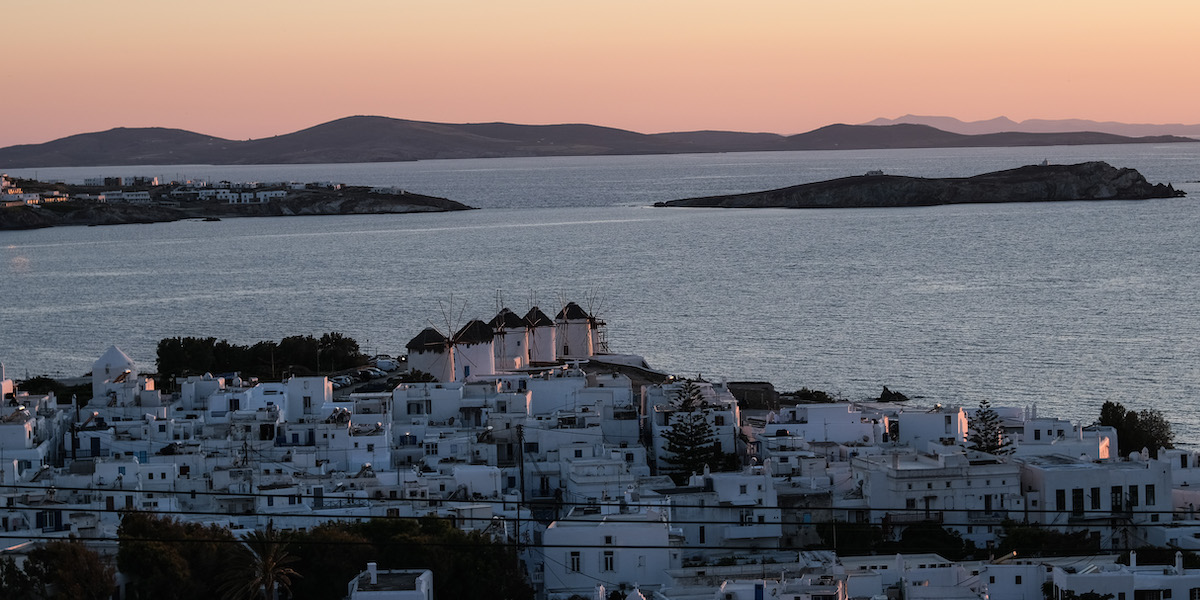Mykonos – one of the major islands of the Greek archipelago of the Cyclades, in the Aegean Sea – is among the main tourist destinations of Greece, one of the most visited countries in the world. After difficult years due first to the Greek crisis and then to the pandemic, in 2022 Mykonos, which has a resident population of about ten thousand people, returned to having more than two million tourists, a number that is expected to grow again this year .
In addition to the problems due to the number of its tourists and those due to their often being very “party animals”, for some months Mykonos has also been talked about for the contrasts and clashes between those who want to build other accommodation facilities and those who would instead like to protect them mostly history and archaeological sites.
The Mykonos issue recently emerged when last March an archaeologist who had opposed some new tourist constructions was injured in Athens, in an attack described as “mafia-style” by Despina Koutsoumba, the president of the association of Greek archaeologists . Of the problem of Mykonos – which has sometimes come to be spoken of as one”state within state” – we then returned to talk in recent days, in view of the general elections of 21 May.
The success of Mykonos as a tourist destination began between the 1950s and 1960s, but already in the 1930s the island (which has an area of 86 square kilometres, a third of Elba) had begun to make itself known to those who went to visit nearby Delos, the small Greek island next to it considered sacred in antiquity and linked to the cult of the god Apollo. In that period there were in fact some archaeological finds which were followed by many movements to and from Delos, and someone also began to notice the beauty and tourist possibilities of Mykonos.
Between the sixties and seventies some structures for tourism were built, both by the local community and with targeted investments by the Greek government. Mykonos became a hospitable place and seen as a symbol of freedom, tolerance and cultural exchange: in those years it was, for example, an important point of reference for the LGBT+ community. Mykonos was the first of the Greek islands to attract large numbers of tourists, and over time paved the way for the others as well.
About the recent investments to build new facilities the New York Times spoke of “investors flocking in, eager to cash in on a bonanza of luxury property development, huge hotels and high-wattage nightclubs.” In many cases, the construction of new structures was done through building abuses or opaque practices, often linked to the need to circumvent controls to prevent the buildings from damaging archaeological finds, present in large quantities: only in the last eight years, during for other constructions, 12 have been discovered.
These checks are carried out by a group of archaeologists employed by the Ministry of Culture, whose manager is the 53-year-old Manolis Psarros: the man attacked in March in Athens outside his home shortly after eight in the evening, in an attack that he had left unconscious, with a broken nose and several fractured ribs. In the months preceding the attack, Psarros, for several years head of the division that grants building permits in Mykonos, had repeatedly taken a stand against the irregularities and on several occasions blocked construction work on new structures.
Koutsoumba, the president of the association of archaeologists, had said: “The situation in Mykonos is now out of control, the attack was mafia-style and was intended to intimidate him”, given the great interests at stake.
(AP Photo/Petros Giannakouris)
The government of Kyriakos Mitsotakis has tried to manage the situation by sending 100 more policemen to Mykonos and announcing greater controls on building abuses and greater attention to the archaeological and ecological issues of the island. In relation to these issues, 75 arrests have been made so far in 2023, more than double those in 2022. In recent months, the closures of two important “beach clubs” on the island have also been announced as a result of irregularities resulting from the controls.
However, some associations on the island argue that the government is doing too little to resolve a big issue that has been dragging on for years: the Greek Supreme Court recently defined the situation in Mykonos as “wretched”.
